3 national seashores and coastal parks that could be changed forever by sea level rise
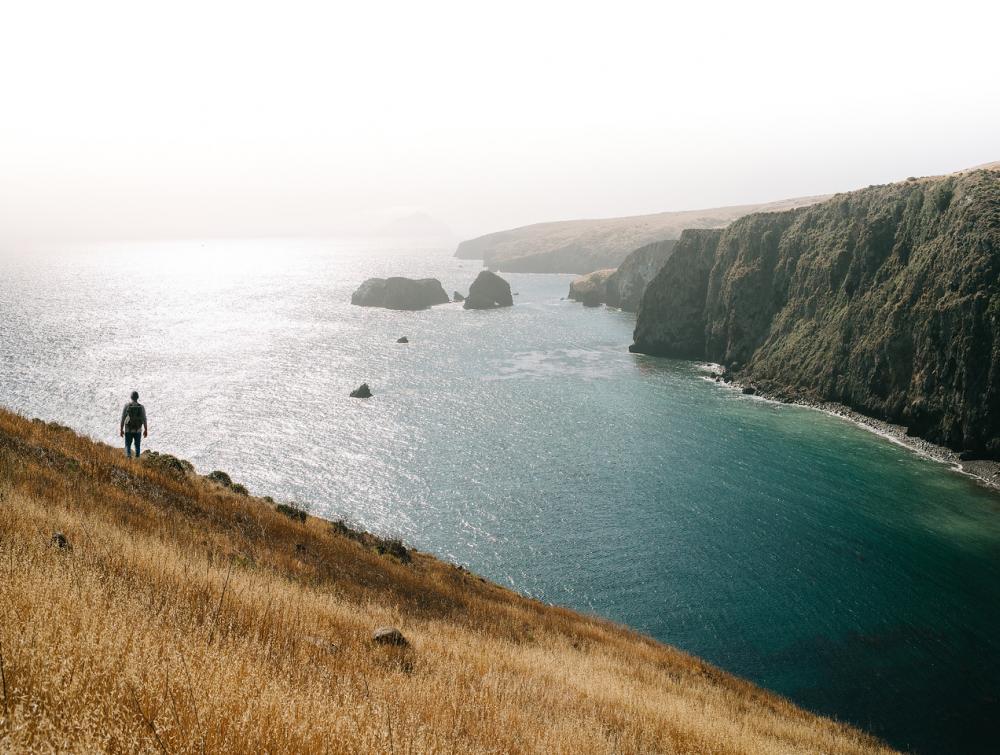
Jason Fitzgibbon
The National Park Service turned 100 in August 2016, and we took the chance to look at three national seashores and parks that could change drastically due to climate change.
One of the most visible ways climate change is threatening our national parks and other wildlands is rising sea levels.
Fluctuations in sea levels are natural, but the current rate at which they are rising is not. As global temperatures rise partly due to man-made activity, the ocean heats up and takes up more space—called thermal expansion—and glaciers, ice caps and ice sheets begin to melt, causing the baseline of the ocean to rise and impact our coastal public lands.
Natural processes like high winds, tidal forces and powerful waves already constantly reshape and reform the shorelines of our parks, monuments and seashores, but climate change will accelerate this transformation. Lake levels are also impact by climate change due to yearly and seasonal changes in precipitation, evaporation and runoff.
Even a slight increase in sea levels threatens infrastructure and wildlife habitat, not to mention millions of American homes, and the rate of sea level rise has doubled over the course of the twentieth century, to around 0.14 inches per year.
Although a little more than one-eighth of an inch per year may not seem like much, the problem is expected to get much worse. It is thought that the sea levels along the U.S. coasts will rise by at least 8 inches by the end of this century. That will heavily impact the nearly one-quarter of National Park Service areas that lie on large bodies of water, plus 7,500 miles of ocean and Great Lakes shoreline the agency oversees.
Why our coastal wildlands matter
Public lands that lie on the water are just as irreplaceable as those farther inland, preserving culture, protecting wildlife habitat and providing innumerable recreational opportunities that are unavailable elsewhere.
“Our coastal wildlands are important for both humans and animals alike.” said Travis Belote, Ph.D., research ecologist with The Wilderness Society. “They provide critical wildlife habitat but also act as buffers to protect local communities from severe weather and storm surges.”
Coastal public lands act as refuges for both terrestrial wildlife, like migratory birds, and aquatic creatures, like young fish, crocodiles and sea turtles. Both salt- and freshwater coasts attract millions of people for opportunities to observe wildlife, fish the shores or take to the water to kayak and canoe.
As sea levels continue to rise and transform many of our ocean coasts, they threaten all of this. It is vital that we do all we can to reduce greenhouse gas emissions, like the super-pollutant methane, and keep U.S. climate goals in line with the historic Paris agreement. But we must also manage public lands and water in such a way that acknowledges major changes are already happening.
Many parks are already discussing how climate science can be used to better understand changes on public lands, from sea level rise to glacial change and ocean acidification. Some are planning ahead, shifting park infrastructure management, like at Assateague Island National Seashore, or using restoration techniques, like at Everglades National Park.
Here are three examples of how climate change is impacting our national seashores and parks and efforts to preserve them:
Assateague Island National Seashore (Maryland/Virginia)
Off the shores of Maryland and Virginia stretches a 37 mile-long barrier island known for its wild horses. Assateague Island National Seashore is a favorite for camping, canoeing and shell collecting, as the estuarine waters provide refuge for many fish, crabs and shorebirds.
Exposed to storms and shifting tides, this barrier island naturally and frequently shifts, but climate change will accelerate this process. Scientists predict that by 2040, the island will have more extreme weather, and the sea level around the national seashore could rise up to 9 inches. The higher the sea rises, the more waves will wash over and re-shape the island. This reshaping is happening too quickly for park management to keep up with and is making it difficult to preserve infrastructure.
Because of this, Assateague is one of the first National Park Service units to account for climate change in its long-term management plans. Land managers are looking for ways to adapt, perhaps by moving more park activity to the mainland and making it accessible by boat instead of a bridge, all in the name of preserving an estimated $135 million in physical assets in the park.
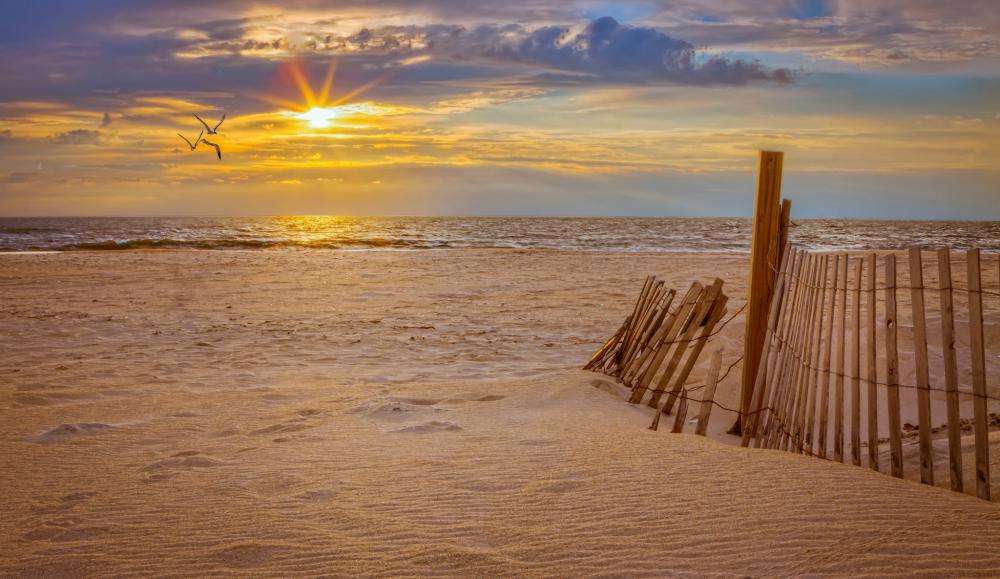
Many enjoy the sunsets and soft sands of the barrier island.
Eric B Walker, flickr.
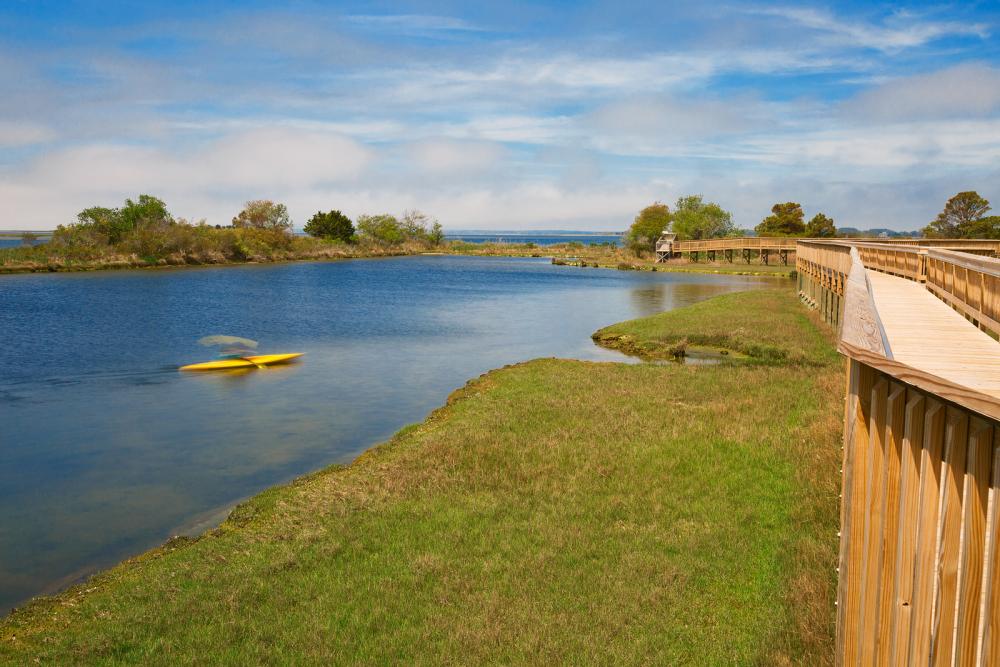
Taking to the water in a kayak allows visitors to explore the island and see wildlife.
Nicolas Raymond, flickr
Everglades National Park (Florida)
As one of the largest parks in the country at 1.5 million acres—bigger than the state of Delaware—this World Heritage Site was established as a national park in 1947 to preserve a unique subtropical wetland.
Everglades National Park houses the largest protected mangrove forest in the northern hemisphere, as well as grass marshes and hardwood hammocks. Home to 67 threatened and endangered plants and animals, many visitors come to admire wildlife and walk along the boardwalks.
Unfortunately, sea levels have already risen 9 inches in Florida over the past century, and for every 2 inches of sea level rise, it is estimated that one mile of the Everglades will be changed forever. Because of the park’s low elevation, sea level rise threatens to upset the balance between freshwater flowing in from rivers and intruding saltwater from Florida Bay. The incoming saltwater alters the Everglades’ wetlands, as freshwater sawgrasses are replaced by mangroves that prefer saltier waters. Wildlife like the manatee, wood stork and Florida panther could be displaced by this shift.
 The ecosystem below the Everglades has also drastically changed due to rising sea levels. Underneath the mangroves and marshes lies limestone bedrock and the Biscayne aquifer. This aquifer has been slowly drained for home and agricultural use over the years, and rising sea levels brings saltwater that fills in the limestone and drained aquifer, threatening the water supply of over seven million people in South Florida.
The ecosystem below the Everglades has also drastically changed due to rising sea levels. Underneath the mangroves and marshes lies limestone bedrock and the Biscayne aquifer. This aquifer has been slowly drained for home and agricultural use over the years, and rising sea levels brings saltwater that fills in the limestone and drained aquifer, threatening the water supply of over seven million people in South Florida.
Currently managers are trying to slow the intrusion of saltwater by restoring the Everglades and increasing the flow of freshwater in order to save precious wildlife habitat and better protect a critical freshwater resource for the local community.
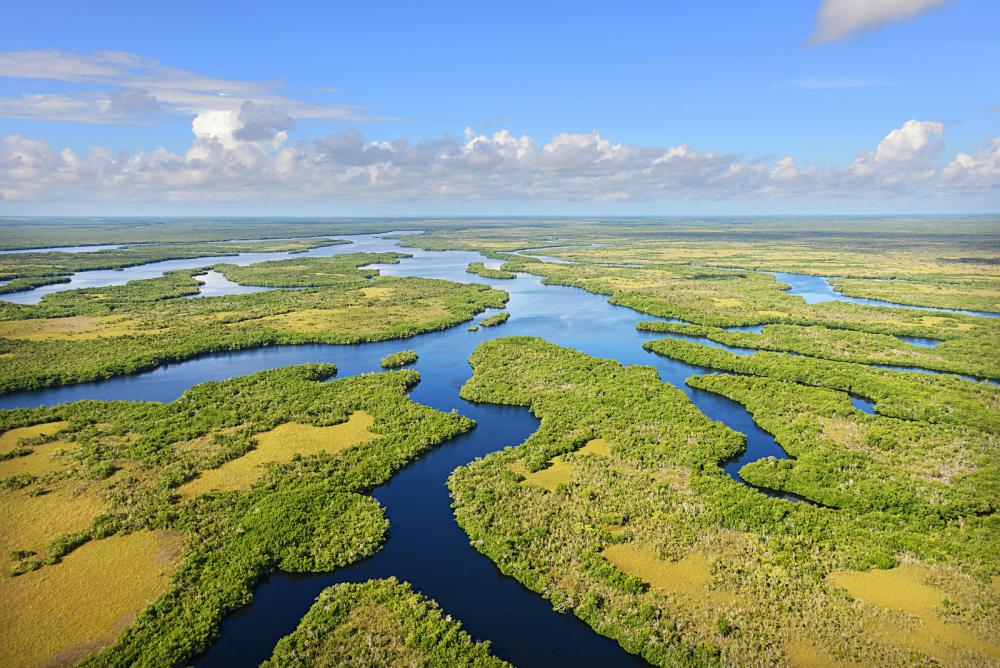
As one of the largest parks in the country, the Everglades are a unique tropical wetland.
Peter W. Cross, flickr
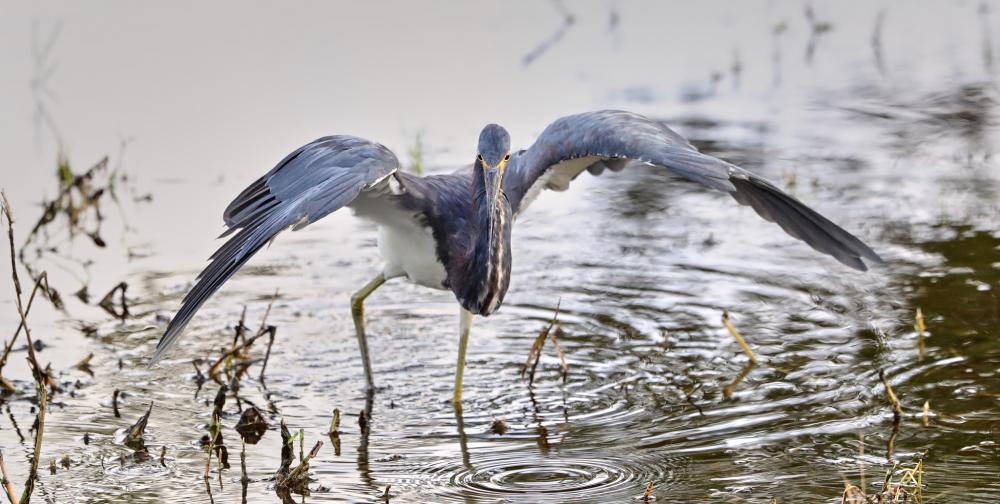
The Everglades are a refuge for many birds, like this great blue heron.
Henry, flickr
Point Reyes National Seashore (California)
Rich in biodiversity, Point Reyes National Seashore is crucial to protecting California’s natural coastal habitat, from thriving Douglas fir forests to bustling sandy shores and vibrant estuarine waters. Geologically separated from the mainland by the San Andreas Fault, the over 71,000-acre park includes a lighthouse for whale-watching as well as cultural artifacts and sites from indigenous peoples.

Chimney Rock provides a scenic overlook to the national seashore. Credit: Joe Parks, flickr.
Rising sea levels endanger the peninsula, with scientists projecting that the sea levels along the California coast will rise between 3 and 5 feet by the end of the century. According to a recent U.S. Geological Service study, over 75 percent of the shoreline is thought to be at risk from climate change impacts. These include erosion and flooding that—combined with more extreme storms—will quickly alter beaches and cliffs.
Infrastructure like roads and old archaeological sites will likely be destroyed and washed away, while critical breeding habitat for northern elephant seals has a strong chance of disappearing by 2050. Point Reyes contains more than 120 cultural sites from the Coast Miwok people that inhabited the area over 5,000 years ago, and artifacts in the park could also be at risk of washing into the sea as cliffs erode.
The National Park Service is working with Native Americans to try and preserve these cultural treasures. One archaeologist says that at Point Reyes, 54 of the 160 sites he studies are in danger of being erased in the next century from climate change impacts. Although there are many challenges, the agency is looking ahead as it incorporates climate change impacts in its plans for the future.
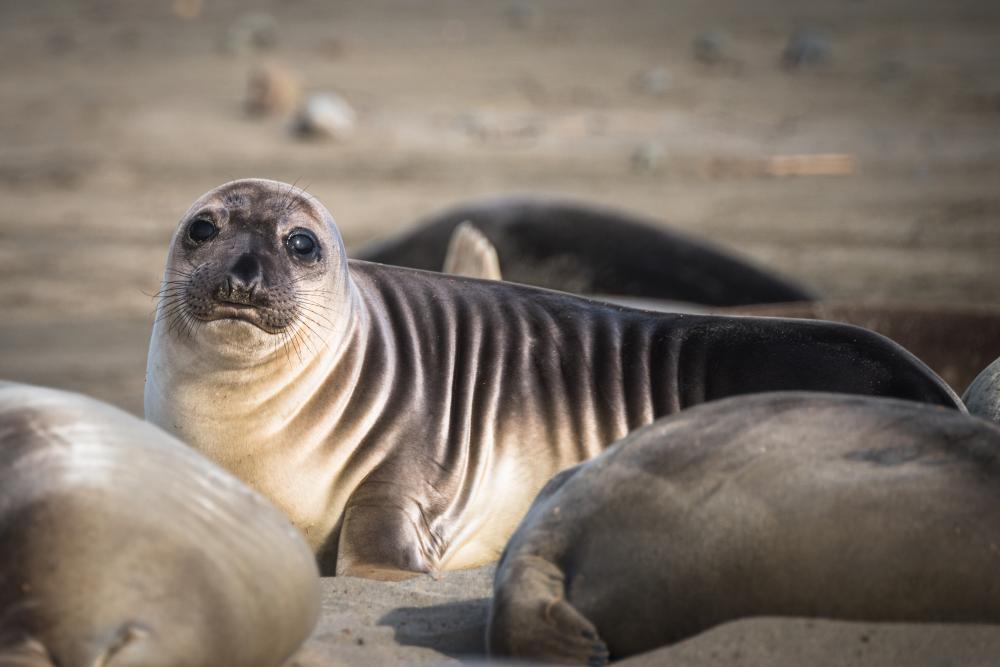
Northern elephant seals like to bask in the sun on the Point Reyes shoreline.
Mason Cummings, The Wilderness Society
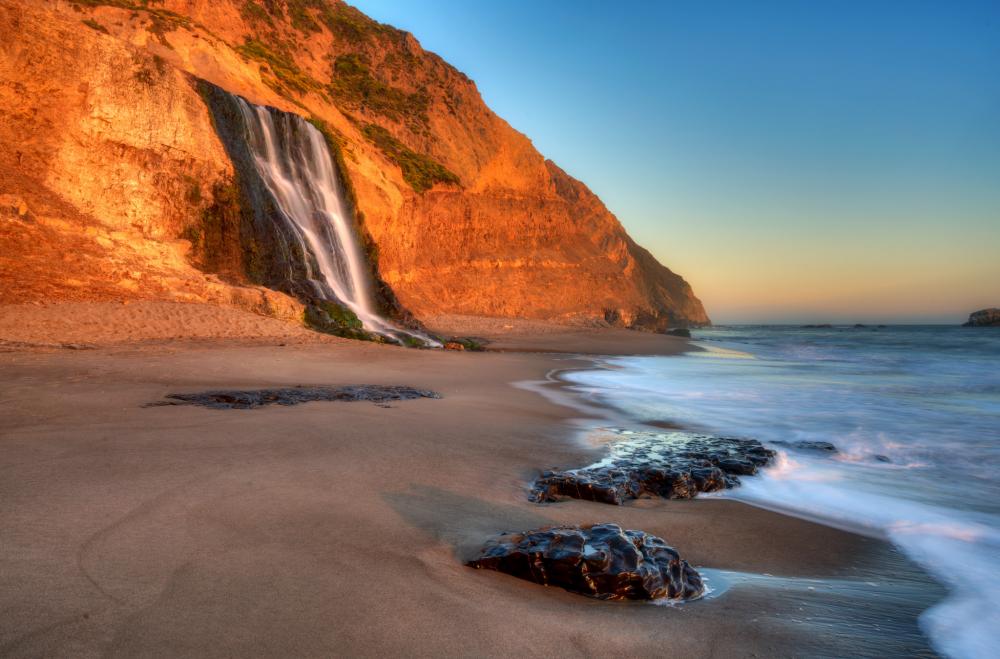
Waterfalls are a special treat for those hiking along the seashore.
Beau Rogers, flickr
